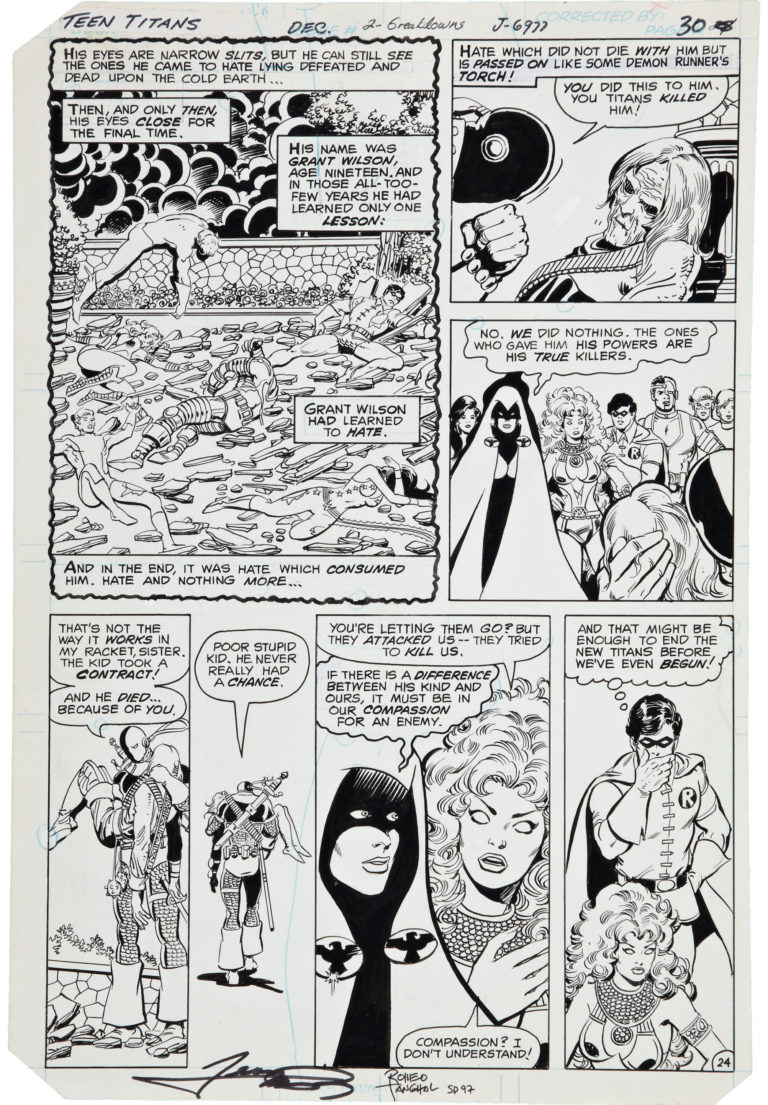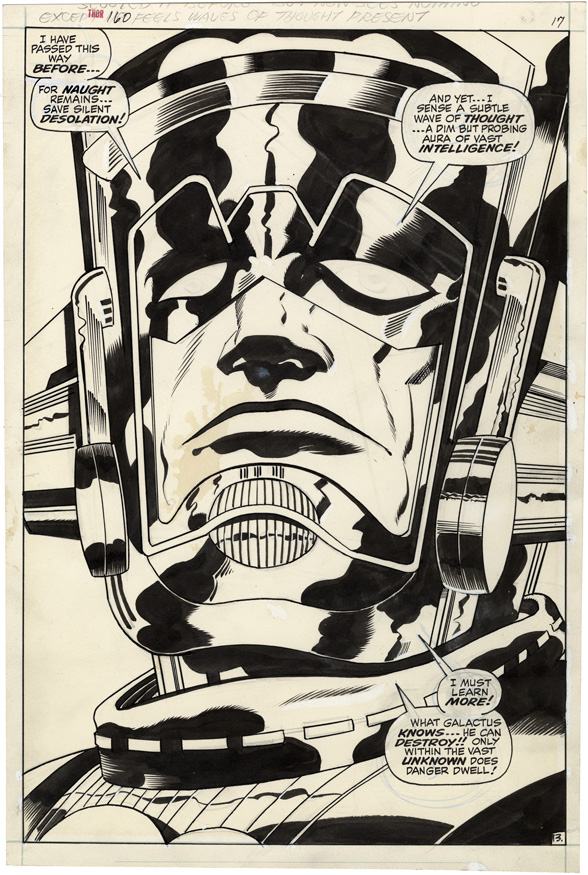
Pricing and valuation of Comic Art
To actually have a collection, you are going to have to buy art. One of the hardest parts is valuing it! What is art actually worth? What should you pay? These questions drive new collectors and old collectors alike mad. On the flip side if you want to sell a piece you need to have a sense of value to know what to ask for it. New collectors may decide not to participate in the hobby at all when they can’t make sense of pricing. Old collectors may overpay too often or rarely be able to purchase art as they are not understanding of the true value of a piece.
Let’s talk about this complicated topic.
Price/Fair Market Value
What are we talking about exactly when we say we are valuing a piece of art? What it is worth? What should it cost? This is a very tough thing to nail down. People look at this question differently; for us when we talk about value let’s define it as the price range we expect a piece to sell at with all the information(and some imagination) we have available to us. Value is fluid and constantly changing. Every now and then we will be able to name a price right down to a single number. Most of the time however we are going to have to settle for a price range. Sometimes this range may be huge. Some pieces will have more upside in their range and some more downside. Value is more of an art than a science. If you are looking for a simple equation to valuing art and exact numbers…..It isn’t going to happen. Be aware of this while trying to value art.
More Desirable = More Expensive
More desirable art equals higher prices. Simple enough! The main lesson, as I mentioned in grading comic art, as grade goes up so does price, and it happens in a parabolic fashion. A B/C and a B piece may be relatively close in price. When you get to an A/B to an A piece, the price may double or triple. When we are talking about A+ art the multiple can go completely nuts. Many times collectors forget this and end up undervaluing pieces towards the upper end of the scale. If you want that A or A+ pages, be prepared to pay. On the flip side sometimes people can easily make a mistake and will drastically overpay for a lesser piece when they are comparing the art to a top end piece and don’t drop the multiple enough. This is why accurately grading art is so important. Study the subject matter you love and become an expert, and your valuations will be much more accurate.
Availability/Supply
In general lower availability of art will generate higher prices and higher availability will blunt prices(duh!). There is also overall supply to consider. Rare examples(art from projects where most of the supply has been lost or destroyed), or projects where very few originals were produced(Shorter stories or stories with few top shelf examples) will create much higher prices in general. At this moment in time there are more collectors wanting to buy than the supply of material that is coming to market(for the majority of high demand art.) This means in general for quality material you should expect to pay up instead of expecting to get a deal. When comparing art to past results expect the price to be on par or higher than past sales, not lower.

Tools To Value Art
Comping
Comparisons to pricing data of similar art that has sold in the past. The most common form of valuation. However often times comps don’t work very well. Art is not a commodity, no two pieces are exactly alike, and most art doesn’t sell often enough to be able to come up with precise values. Still, the first step most take is to compare the work to past selling prices of other similar works. Grading the art and comparing it to the grades of past sold pieces from the same projects will get you a rough estimate of value. Let’s suppose a page we grade B+ is up for sale. In the past 3 years 2 b pages have sold in the 1000 range and an A page has sold for 3000. It would be a safe preliminary estimate to think the B+ page is worth about $1500. Take note of how long ago sales were however when comping art. As prices have risen dramatically the past decade, sometimes even sales results from a year or two ago can be completely outdated.
Ask a Friend
Picking the brains of people you know in the hobby can be a great way to gauge value. Sometimes thoughts on value will align. Often times however you can ask 3 people and get 3 completely different answers. Having the ability to ask others will help you better understand the value of a piece. Finding an expert on a certain artist is probably the best source. If you are not an expert and someone else is, and your valuations are way off, realize it is probably you who is wrong. In general the more opinions you have the better off you will be. At the end of the day however other people’s thought are input and you need to trust you own valuation.
Imagination
In the end it is usually going to come down to personal feel for value. Remember how I said pricing is an art? The art is filling in the blanks in a puzzle that is missing a bunch of pieces of information . We will also have some pieces to help us on our way but it will come down to our own personal opinions and rationalizations of a items worth. The more you practice grading and being around comic art in general the better you get when it comes to putting together the pieces of the puzzle of valuing art. Eventually it will turn to instinct and you will learn to trust you gut. Remember though if your valuation ends up being way too high or far too low compared to the sale price of a piece, you may need to make some adjustments. Some collectors are very rigid in their values(they must see hard data) and are unable to add this skill, leaving these collectors to often being bewildered on prices of items that come to market. Don’t be afraid to open your mind!

Be Comfortable With What You Spend
Just kidding actually! We all like to spend less than we think we think FMV is, but be careful! Some are is CFAR(cheap for a reason.) Many times the pieces we are comfortable with what we spend end up in the sell pile eventually. The wow pieces will always be expensive. An interesting tidbit when you talk to enough people is that collectors purchases that they covet the most they were often the most uncomfortable(thinking the paid way too much) with what they paid! There is a ridiculous saying in collecitbles markets that actually has some merit, “What you pay is what it’s worth.” Most of the time you will have to pay up for the truly great pieces so instead of looking for that bargain, I think most collectors are better off waiting for the right piece and holding their nose, which leads us to our next section.
Overpaying
People in general despise overpaying for things in life. It makes almost all of
us feel horrible, whether it is a car or a cup of coffee. However when purchasing art overpaying can be a winning strategy. The bottom line is often time the price you will have to pay is “higher” than what you value it at. That is just the reality of truly great pieces. Remember comps are just a picture of the past. In an auction setting you are going to have to bid until you win or put in a monster snipe bid at the end and let the chips fall where they may. In a fixed price sale you are sometimes going to have to meet someone’s very high asking price who simply has no will to budge.
This is something I recommend you have some experience before doing regularly.
If you are not able to meticulously grade art and identify truly special pieces that appeal to the core of your being as a collector, this method will be a disaster.
Now remember, This does not apply to the sum of money you are spending. If you can’t afford a piece, it probably isn’t a good idea to buy it. That being said if you want something badly and are willing and able to pay over market price, don’t be afraid to. If it is worth a certain price to you, become the market leader.
Sometimes Prices Will Make No Sense
Sometimes the price an item sells for is simply not going to make any sense. Oftentimes the price will go far higher than anyone could reasonable predict. Sometimes a price will be so low it will leave collectors shocked. Outlier results do happen, so take them with a grain of salt. If the become recurring however it can indicate a large change in the market value of a particular set of examples. There are also artists that for whatever reason consistently have huge variance in their prices of their works. In these cases just be comfortable with what you spend on a piece. Don’t be afraid to pay a price at the top ranges just because a few similar pieces sold much cheaper.
Ultimately, value comes down to you. So don’t be afraid to step up on a great piece you must have. Likewise don’t be afraid to back off on the price of a piece if there is something that doesn’t sit right with you about it(even if it is small). Buy(and if you have to overpay so be it) what you love and you will be better off in the long run.
I really hope this article makes you feel at least a little more comfortable valuing comic art. If you were looking for a formula to exactly value art, sorry, it isn’t going to happen. There are obviously a lot of factors that contribute to the market value of a piece, and nobody will ever develop a perfect system. I really only scratched the surface in this article, and that was on purpose. I had a bit of trouble writing this section and was wondering why. Then I realized my problem. There isn’t really a shortcut or a manual. The more time you spend in the hobby the more your ability for pricing art will develop, until it becomes instinct. Value is a 500 piece puzzle with a couple hundred pieces missing. Try to develop you own methods to fill it in. My final words of wisdom, it is better to overpay for a piece you love than underpay for a piece you like. When it comes to great art err on the side of paying strongly. Lay off the art that is okay but is a “deal.” You will be glad you did.

